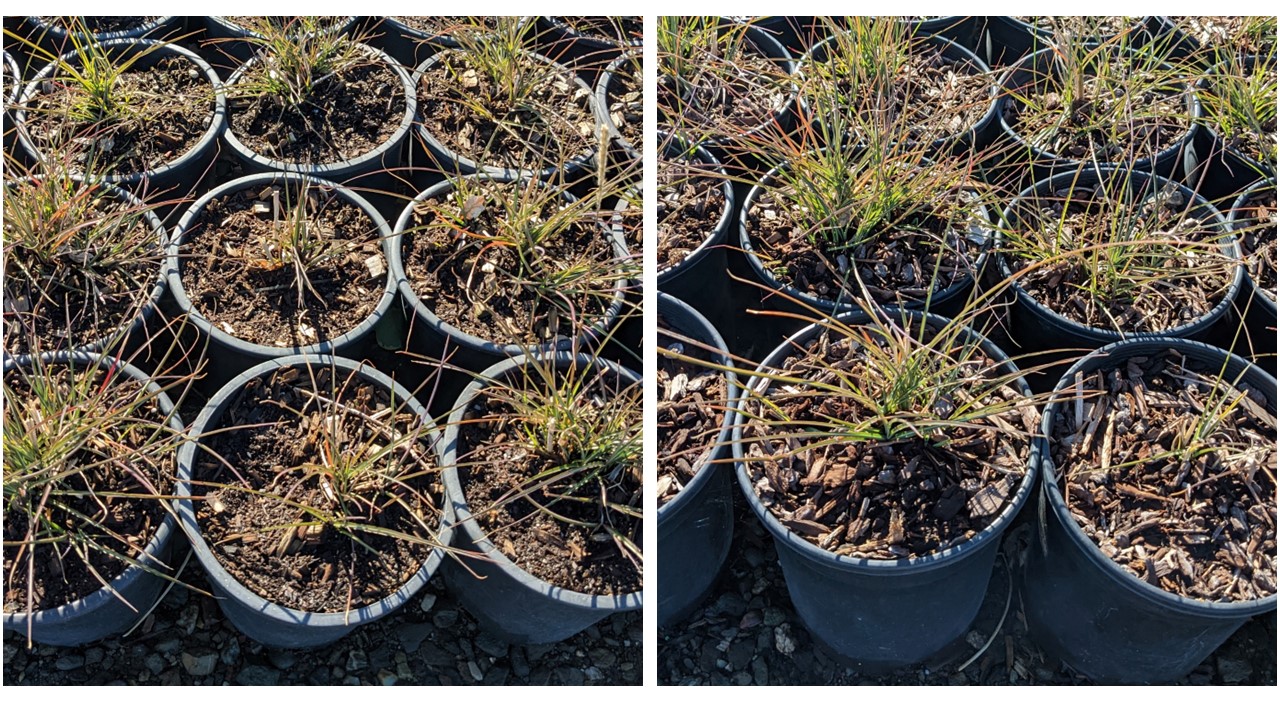Mulching Containers to Reduce Weed Pressure
Horticultural methods, techniques, growing practices, and principles
Quick Summary
- Mulch applications consisting of ½” – 2” coarse bark to the top of potting media can reduce weed growth by over 90% in nursery container plantings.

Weeds are a common problem in container-grown plants and could require significant labor to remove before plants are shipped. No matter how well weeds are managed in the nursery, seeds can disperse for miles by wind or animals or arrive at the nursery from unpasteurized potting media. Reducing weed pressure in container plants typically requires manual removal or preemergent herbicide application to the potting media. However, research indicates that applying coarse bark (>1/2 inch) to top of the potting media can reduce or eliminate certain weeds from growing in container plants.
Weed seeds germinate on the top of the potting media because of high moisture content, where they have access to sufficient water and fertilizer. Once weeds get access to water and fertilizer, they grow faster and outcompete the plants that are intentionally being produced. Coarse bark, like mulch in landscapes, acts as a physical barrier to prevent weed seeds from touching the potting media. The weed seeds stuck in the coarse bark are less likely to germinate due to the low water content of the bark. Furthermore, weed seeds that do germinate cannot access fertilizer that is incorporated into the potting media and their growth is reduced.

Research indicates that using ½ to 2-inch sized bark mulch works well for reducing weed seed germination and weed seedling growth in potting media. The number of weed seedlings were reduced by 90% when using a one-inch layer of bark mulch. Researchers had 90%, 99.5% and 100% reduction in weed growth, less germination and biomass when compared to untreated control, for one, two, and four-inch layers of bark mulch, respectively. This means that a one-inch layer of mulch provides very good control of weeds, and a two-inch layer provides even better control, while a four-inch layer may be unnecessary. Weed control provided by the mulch is comparable to preemergent herbicides but bark mulch will outlast preemergent herbicides that are applied to potting media.
A separate hopper of bark mulch at the end of a potting line can add mulch before the plants are moved to the growing area. Mulch is used extensively in landscapes to reduce weed growth and provide many other benefits including increased water retention. However, mulch in containers does not decrease evapotranspiration from the potting media.
Bruno J.L. Pitton is an Environmental Horticulture Advisor with UC Cooperative Extension in Placer and Nevada Counties. He can be reached at bjpitton@ucanr.edu.
